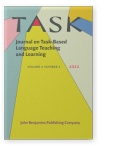Vol. 2:2 (2022) ► pp.248–268
A case study of curriculum aspirations and classroom realities for TBLT in a remote rural secondary school in Northwestern China
School children in China’s remote Northwestern region are generally from poor farming villages where English language education presents significant challenges, particularly since the implementation of China’s 2001 English curriculum innovation requiring tasked-based language teaching (TBLT). This one-month field study, set in a typical rural secondary school, investigated the degree to which the curriculum aspirations for TBLT were reflected in classroom practices in the school. Participants were ten 7th-grade teachers of English. Data included lesson observations, interviews, and field journals. Findings showed that classroom practices did not conform to the principles of TBLT, though some efforts in using task-like activities were observed. The contributing factors influencing classroom practices were multifaceted with teacher education the most salient. This result indicates that teacher preparation for TBLT needs to be tailored for the rural context if it is to have any chance of gaining a foothold in this context.
Article outline
- Introduction
- The English language education environment in China
- English language education and the National English Curriculum Standards (NCES)
- Rural China
- The typical rural family
- Teachers of English in rural areas
- Method
- The school
- Participating teachers
- Data collection
- Data analysis
- Results and discussion
- Observed Lesson Characteristics
- Grammar-Translation (GT)
- Present-Practice (PP)
- Present-Practice-Produce (PP)
- Contributing factors to the lesson characteristics
- Observed Lesson Characteristics
- Conclusion
-
References
